I. Overview of the project The project is a cross-section of the 2# coal return wind alley and the Jindashan wind shaft at an angle of 142.5 degrees. The culvert excavation method is used to dig a 12.5 degree right angle from the 524 sheds of the 2# coal return air main road. The horizontal distance is 81 meters, the height difference is 19 meters, the roadway excavation slope is 13 degrees, and the penetration distance is 83 meters (with the actual measurement control measurement chart). In order to ensure the safety of this project, the following safety technical measures are formulated. Second, the roadway specifications The section of the return airway is trapezoidal, with a top hair width of 3220mm, a lower hair width of 4120mm, a hair height of 2660mm, a hair cut area of ​​9.76m2, an upper net width of 2900mm, a lower net width of 3800mm, a net height of 2500mm and a net sectional area of ​​8.38m2. It adopts No. 11 mining I-beam and I-steel leg support. The shed spacing is 0.85 meters. Use 6 wooden back panels to top the roof and use 8 cement backing plates to help. When you first dig, use a wooden back plate to help. (Attached roadway section) It is supported by stone masonry within 10 meters from the through hole. The lane width is 3300mm, the straight wall height is 1050mm, the foundation depth is 250mm, the wall thickness is 300mm, the arch height is 1350mm, and the roadway has a net height of 2400mm. (Attached roadway section) The roadway at the through point of Jindashan wind shaft is supported by stone masonry support. The lane width is 3400mm, the straight wall height is 1200mm, the foundation depth is 250mm, the wall thickness is 300mm, the arch height is 1500mm, and the roadway has a net height of 2700mm. The inclination angle of the wind tunnel is -15 degrees from south to north. (Attached roadway section) Third, the stone masonry support technology and safety precautions: (1) Temporary support 1. Temporary support adopts bolt support: the anchor is ¢18×2000mm left-handed rebar high-strength anchor, and the tail thread of the anchor is 100mm. The anchoring uses one extension of each of the K2335 and Z2360 anchoring agents. The anchor rod is arranged in three flowers: one row of five and one row of six, and the row spacing is 900mm×900mm. If the top plate is broken or the top plate is broken, the distance between the top plates should be reduced according to the site conditions, and the number of bolts should be increased. 2. Before the temporary support of anchor bolts, the requirements of the “Notice on Supporting the Standardized Excavation Work†of Jinmei Group Jinsheng Company must be strictly implemented. The arched roadway adopts the internal injection type single column for temporary support, and the single column The distance from the permanent support shall not exceed 1000mm. The column must be worn on the single column. The size of the column cap shall not be lower than: length X width X thickness = 300mmX300mmX50mm, and must be supported on the solid bottom. 3. After the blasting of the roadway, the cadre of the gang, the security inspection, the team leader and the watts inspection workers shall strictly carry out the four-in-one safety inspection of the working face according to the safety management regulations of the coal mine, and deal with the safety hazards detected on the working surface, confirming After no safety hazard, the team leader organizes the operator to stand under the permanent support and tighten the internal injection unit column for temporary support. The spacing of the single column rows shall not exceed 1000mm, and the support shall be supported on the solid floor. On the upper part (if the bottom plate is soft and cannot guarantee the support requirements, safety measures such as “wearing shoes†at the bottom of the column must be taken to ensure the support of the single column.) The upper link must be prevented by 4 points of wire rope between the single columns. The single column must be installed with the column cap as required, and ensure that the column cap is firmly connected and the support is strong. Each single column must ensure that the initial support force is not less than 67.8KN. The number of single columns used in each section shall not be less than 2, the maximum distance for each tunneling shall not exceed 2.3 meters, the maximum control roof distance for temporary support shall be 2.3 meters, and the minimum empty roof distance shall be 0.3 meters. The construction of the temporary support of the bolts can be carried out after the single column is supported and the safety inspection is carried out to confirm that it meets the requirements of safe construction. 4. Anchor rod temporary support construction technology: (1) Eyes. The MQT-130 pneumatic anchor rig is used for drilling. The hole depth is required to be 1930mm-1950mm. After the drill bit is drilled to the predetermined hole depth, the anchor bolt machine is lowered, and the hole is cleaned to remove rock powder and mud. (2) Place the resin roll. The anchor rod body is sleeved on the tray, and the nut is attached. The tail end is connected with the bolt head through the installer. The K2335 fast anchoring agent is first installed, and then loaded into the Z2360 medium speed anchor rod end, and the inserted resin is inserted. In the hole of the medicine roll, the anchor machine is raised, and the medicine roll at the orifice is sent to the bottom of the hole. (3) Stir the resin roll with a bolt machine. The mixing time is strictly controlled according to the manufacturer's requirements (20-30 seconds), and the mixing process is required to be carried out continuously without interruption. After stopping the stirring, wait for 3 minutes before tightening the nut with the bolt machine to make the bolt have a certain pre-tightening force, and the pre-tightening torque is not less than 120Nm. The maximum row spacing between bolts shall not exceed the specified value ±100mm, and the anchor rod shall be exposed 10mm-40mm. Temporary support quality requirements Anchor anchor Length threaded hole deep exposed length pre-tightening moment anchoring force type, quantity stirring time initial setting time 2000 mm 100 mm 1940±10 mm 10-40 mm 120Nm 100KN K2335 one Z2360 one 20~30s 3min (4) Main safety technical measures and requirements: 1 Eye workers and support workers strictly implement the “Standards for Jobs†and “Technical Operation Procedures†of this type of work. When two people work together, one person must operate and one person should press the eye. Before hitting the anchor, you must carefully knock on the top of the pole, remove the loose coal block from the top, and confirm that there is no danger before working. 2 Eyes must be drawn as required. The arrangement of the anchors should be reasonable. It is strictly forbidden to penetrate the skin or drill along the surface and cracks. 3 When drilling bolts for construction, it is strictly forbidden to work under empty roofs and in poorly supported areas. Construction workers must stand under cover ARCH or temporary anchor, and rigs, drill pipe and the tunnel rock face is at an angle 75 ° from the top to help hole by hole. 4 When drilling and installing the anchor, the experienced old worker must be sent to the top of the visor, and then the anchor will be injected from the outside to the row. Only when the pre-tightening torque reaches the requirement can the next anchor be carried out. The hole of the rod is installed; and a hole must be insisted on, and a set of anchor rods is installed. It is strictly forbidden to install the hole once after the hole is finished. 5 Before construction, the supporting materials and tools used should be fully prepared, and 4-6 people should form a support team. The whole process will be carried out under the unified command of the squad leader. The inspection and acceptance personnel will check the site and complete the task with quality and quantity. 6 The maximum row spacing between bolts shall not exceed the specified value ±100mm, the anchor rod shall be exposed 10mm~40mm, and the bolt angle shall not be less than 75°. The bolt tray must be close to the rock wall, the tail nut must be tightened to meet the pre-tightening force requirements, and the threaded part must meet the exposure standard. Expired resin anchoring agents are strictly forbidden to use, should not be littered, and should be handled lightly during handling. It is strictly forbidden to collide, crush and squeeze to prevent rupture. 7 The upper pallet must be carried out by two people together, and an experienced old worker should be arranged to observe the change of the roof and find that the abnormality is immediately withdrawn. 8 According to the regulations, the pre-tightening torque of the temporary support bolt must be detected by the torque wrench one by one. The pre-tightening force of the anchor should reach 120Nm; the anchoring force of the anchor is checked by the bolt puller, and one set of 300 samples is taken. Group 9), anchoring force should reach 100KN. The exposed length of the bolt is 20mm-40mm, and the bolt that does not meet the requirements must be replenished in time. 9 Install the anchors in accordance with the following regulations: a. Before installation, check the bolt hole arrangement, hole distance, hole depth, angle and bolt parts to meet the requirements of the operating procedures. If it does not meet the requirements, it should be treated. b. Before installation, the accumulated water and rock powder in the eye hole should be cleaned with pressure air. When purging, the operator should stand on the side of the orifice and there should be no one in the direction of the eyelet. c. Install the anchor rods with the bolts installed with the eyes and install them as required. d. Install resin anchoring agent: Send the anchoring agent into the eye according to the specifications and sequence specified in the operation rules, and slowly push the anchoring agent into the fundus with the anchor rod. e. Stirring anchoring agent: connect the drilling rig to the anchor rod, start the drilling rig, push the anchor rod to the bottom of the hole while stirring, and then continue to stir. Stirring time and waiting time are strictly in accordance with the specifications of the product manual and operating procedures. f. Tighten the anchor: After waiting for 3 minutes, start the drilling rig and tighten the nut. The pallet is close to the rock face and the bolt reaches the specified preload. g. When the anchor is installed, it should be installed once. The exposed length of the bolt should meet the requirements of the operating regulations. One anchor does not allow the upper two plates or nuts. l After the bolt is installed, the initial anchor torque is detected. If it is insufficient, it must be tightened twice, and the anchoring force should be checked regularly according to the regulations. The unqualified anchor must be re-filled. 5. After making temporary support and checking to confirm that the temporary support is safe and reliable, the masonry began to clean the scum on both sides of the working face, dig the foundation, build the straight wall, and construct the permanent support. (2), permanent support 1. Sprinkle water to reduce dust, load rock, and slag Temporary support is in place. After the team leader and safety officer have passed the inspection, the water will be sprayed to reduce dust, then the slag will be installed. 2, the foundation Check the depth and position of the trench according to the middle waistline and calibrate the upper and upper flat lines. Insufficient depth is enough to hit the wind. When laying the foundation, first fill the mortar with a thickness of not less than 50mm, then place the foundation stone. The foundation stone should be flat and straight, the gray joint is full, the size of the gray joint meets the design requirements, and the foundation must be built on solid rock. On the bottom plate, if a small amount of coal-based floor is used, the coal seam can be cleaned by increasing the depth of the foundation to expose the foundation of the rock floor. If the floor coal seam is too thick, more than 1 meter, the C25 must be built with masonry rails. The way of the concrete base strengthens the stability of the foundation and ensures a solid and reliable foundation. 3, masonry straight wall (1) Knock on the top, remove the floating raft, and clean the base surface. (2) According to the waist line in the roadway, first hang the vertical line and horizontal line and build according to the line. (3) When laying the wall, the stone must be placed flat and flat. When the wall is not flat, apply the small stone pad to make it flat and stable. In the inclined roadway, the seam of the large stone surface should be consistent with the slope of the roadway. (4) Fill the wall with the vermiculite and fill it with the wall. (5) The pressure of the stone should be obvious. Under normal circumstances, the width of the pressure should not be less than 1/3 of the width of the stone. The joints must be tight, and heavy seams, quilting, dry seams and uniforms are strictly prohibited. The hoe must be kept long and short. (6) The joints of Xinyi and Laojiao must be cleaned of coal and other debris and treated with water. 4, take the workbench, support abortion (1) The length of the workbench is 2m, the height is 1.0m, the thickness of the workbench is not less than 50mm, and the lap joint of the worktable is palladium hooked. Use 14# mining channel steel to bend the hoop and use 50mm*80mm*2000mm wood board for the template. (2) Rinse the abortion and the template with clean water to remove the dust and debris from the abortion and the surface of the template. (3) First plant the small column legs, the column legs size is 1600mm*150mm*200mm, the small column legs must be dug to the solid bottom, then the connecting plate is placed, and the connecting plate can be placed with a maximum of one column cap. Finally, the workbench beam is placed, the diameter of the small beam head is not less than 160mm, and the girders are not less than 70mm. (4) Manually transport the stable hoops and carry them at least 2 people during transportation to ensure uniform transportation capacity. During the process of supporting and setting up the hoop, it is necessary to arrange special personnel to observe the top and help, and strictly implement the system of knocking and helping the top, and the safety officer and the team leader should supervise the whole process. After the template is supported, the template should be checked for security to ensure that the template is safe and reliable. 5, the arch (1) When erecting arches, it is necessary to build the arch lines from both sides to the center, so that the tires are evenly stressed, and asymmetric masonry is strictly prohibited. (2) Build the raft with the arch. The arch stone should be close to the seesaw, with the big head facing up, the stone should be flat, straight and stable, and the stone must be tight with the bite stone. After the arch is to be filled with the building, the raft and the gang must be filled with strictness. 6, capping and closing the door When arching to the last three layers of stone, the rafts are all placed, and the caps are segmented according to the length of 1.5m. The palms face the permanent support direction, and the vault stones are placed in turn. The topping mortar must be full and the stone is centered. The last piece of stone must be tightly packed with bite stone to prevent the top or gray seam from being centered. 7, demolished abortion and template (1) The removal of the abortion formwork shall be carried out in order from the outside to the inside, and no one is allowed to stay near the abortion. (2) The reincarnation personnel stand on the safe side and clean up the retreat in advance. (3) After the tire is returned, the suspension plate and the template attached to the wall are removed. (4) Remove the tire to the arch, arch plate, templates, and other wood support, should be cleared up, pulled iron nails, and stacked neatly. (5) Before returning to the mountain, there should be a baffle. When the tire is returned, the person stands on the top. (6) The stone wall must be jointed. After removing the fascia board and the stencil, when the surface of the scorpion is uneven or has a pockmark or honeycomb, it should be leveled with sand ash. (7) The general abortion time should be no less than 48 hours, and the large sputum should not be less than 72 hours. Fourth, preparation work 1. According to the measurement data, when the distance from the through point is 30 meters, the measurement control point should be measured to the working face of the return air main road, and the measurement result shall prevail, and the working angle of the return air main road shall be predicted to the actual measured angle. Drill at the point until it penetrates with the through point. When drilling, it is necessary to send people to Jindashan to observe the drilling conditions of the penetration point and report to the mining technology department. According to the measurement data and the condition of the hole, the slope of the tunneling is further determined. During the tunneling process, the drilling of the working face is to be ensured. It can be seen that it can be boring normally. 2. The preparatory work that must be completed when the windward roadway is constructed to a distance of 30 meters from the through point is: the water above the elevation point of the Jindashan mine is pumped out, and the water level is controlled below the height of the through point of 30 meters to ensure The ventilation system is operating normally. Page 2 / (2 pages in total) 3. Preparations that must be completed at a distance of 20 meters from the through point are: (1) Extend the through measurement control point to the working surface, and further integrate the through data by drilling the position of the working surface and the predicted through point to correct the tunneling slope. (2) Prepare the ventilation system according to the ventilation system adjustment plan formulated by the Ventilation Management Department. (3) The through position must be marked in the Jindashan wind shaft. 4. The preparations that must be completed at 10 meters from the through point are: (1) The returning wind alley is changed to the stone masonry support, and the thickness of the masonry wall is 300mm. Within the tunnel, the Jindashan wind shaft shall be erected in accordance with the specifications of the roadway within 20 meters of the through hole, and the support of the through hole shall be strengthened to ensure that the support of the original roadway is reliable, and the support legs below the hoop must be dug. For a good column, the depth of the column should not be less than 100mm. When the ferrule is supported, it must be erected at a mountain angle of 2-3 degrees according to the regulations to ensure stable and reliable support for the original truss. (2) For the diverticulum which is already 1.8 meters wide and 2 meters high by the through-mouth, the wooden point column is used to strengthen the support as required to ensure the safety of the roof during the construction process. V. Safety technical measures before the completion: 1. Before the completion, the roadway must implement the principle of “excavation and exploration, first exploration and then excavationâ€, and carry out construction according to the given construction centerline and waistline. For example, during the drilling process, if there are empty lanes in front or below, special safety measures for overpass roads must be formulated to ensure construction safety. 2. When the penetration distance is 20m, 10m, 5m, 2m, each delivery notice will be delivered to each production department. 3. When the construction is 20m away from the penetration point, each class will start to set a warning according to the regulations in the backwinding alley and the Jindashan wind shaft. Put Fengshui pipelines, cables and other equipment within 10m of the Jindashan wind shaft through the ground, take effective measures (wrapped with waste belts, etc.), and return to the wind alleys before each rigorous operation according to the operating procedures. The through-passway point is also strictly in accordance with the provisions of the implementation of a three-inspection system and a gun alert system. 4. When the construction is 5m away from the penetrating point, each class must promptly determine the penetration distance, time and penetration position through the eye-catching, and report to the branch office. 5. When the construction is 2 meters away from the penetrating point, it is necessary to report to the dispatching command center in time, and the on-site assessment of each branch office can be carried out after the on-site evaluation. 6. Before the completion, notify the dispatching command center and the mine ventilation management department in time, and the ventilation management department will make the preparation work for adjusting the wind path and air volume after the completion, and then the permission notice will be issued. 7. Before the penetration, the safety inspection of the support at both ends of the through-point must be carried out. It is necessary to ensure that the top plate is complete and the support is reliable. If there are hidden dangers, it must be dealt with in time. 6. Safety technical measures when connecting: 1. The whole process of roadway penetration must be organized by the ventilation management department, and the cooperation of other departments and project personnel. All the staff members who participated in the on-site work must have relevant regulations and precautions for the safety technical measures. 2. Before and after the penetration, each time the gun is fired, it must be contacted with the security personnel. After confirming the error, the gun can be fired. Before the shooting, the warning personnel shall be set up in the windward alley and the Jindashan wind shaft. The warning distance shall not be less than 120m (with the warning diagram attached). The security personnel must guard at a safe place and evacuate all personnel within the warning range, prohibiting personnel from passing, preventing the film. Help hurt people. The alert personnel must stick to their posts and must not leave the alert point without receiving the order of the team leader. When the penetration distance is less than 5 meters, the warning point of Jindashan must be guarded all day. It is strictly forbidden for personnel to enter the warning zone. If there are special circumstances, it must be The mine dispatching command center will get in touch. After the mine dispatching command center stops the construction of the returning wind roadway, the mine dispatching command center can arrange personnel to enter. 3. When the remaining distance is 1.5 meters from the penetration distance, the coal wall is first drilled by drilling, and then the construction is carried out by means of wind and coal breaking until it penetrates. When constructing the wall to the straight wall of the through-hole, the wall must not be damaged first. It must be checked and confirmed that the support that has been temporarily strengthened in the through-passage is stable and reliable, and the permanent support of the tunnel that has been excavated is fully in place and checked and confirmed. The detachable wall runs through. 4. When it is connected, it must be required to pass through the permission notice issued by the ventilation management department. When passing through, it must pass through a small section and then pass through the whole section. 5. Before the penetration, it is necessary to ensure that the permanent support is in place and completely solidified; in addition, the template for permanent support within 10 meters from the through point in the return air cannon cannot be removed, and the template is checked for safety to ensure reliable support of the template. The construction work can be continued when the permanent support can be reliably strengthened. After the small section is penetrated, the ventilation system is adjusted in the ventilation management department, and the ventilation system is confirmed to be stable and the whole section can be penetrated. Seven other safety technical requirements (1) Roof management 1. Before the penetration, the support near the through points of the two lanes must be complete and reliable, and must be dealt with in time if there are hidden dangers. 2. Before the penetration, when the distance from the penetration distance is 20 meters, the φ160mm wooden point column is used to strengthen the support of the roof of the concrete that has been opened at the penetration. The wooden beams of each support must be strengthened with wooden point columns. The root wood beam shall be increased by no less than one support pole. In addition, the support for the lock shall be erected along the direction of the roadway according to the precise penetration position determined by the drilled hole. Supporting the support, strengthen the support of the wooden beam, and ensure that the connection is reliable, the back is tight, and the original support is connected and prevented from being inverted. 3. Before the roadway is penetrated, it is necessary to carry out the wooden point column support and reinforcement for the roof of the returning wind road working face within 20 meters, and each steel beam shall have no less than 3 wooden point columns. 4. When setting up the wooden point column, the column nest must be planed. The depth of the column nest should not be less than 100mm. Each wooden column must be supported on a solid bottom plate. In case of softness of the bottom plate, measures such as wearing shoes must be taken to ensure the support. Reliable; when the roadway has a slope, it must be in accordance with the specified angle of the mountain. After the wooden point column is supported, the column cap and the wooden wedge must be used to connect the top plate to the top. According to the situation of the topping, the wooden wedges are firmly tightened and the mountain is powerful. 5. Hand over the class in strict accordance with the regulations, do hand in hand, mouthful mouth, you do not come, I will not leave, pay close to the strict, not negligent. After the succession, the leaders, team leaders, safety officers, and inspectors of the class entered the work surface to conduct safety inspections and found problems in a timely manner. 6. Before each entry, the working face must be commanded by the squad leader, and the experienced comrades should observe the roof. First, look at the retreat, clean up the obstacles on the road, and then use the hook to braze from the outside to the inside. Always pay attention to the situation around the topping personnel. Immediately notify the observer of the abnormality, prepare for prevention, and ensure the safety of personnel. 7. Strictly implement the system of knocking and helping the top, and after the shift, before the shooting, after the shooting, and before the support, a special person should be set to help the top. 8. Each worker in the work surface must pay close attention to the condition of the roof and the wall of the working point. When an abnormality is found, it must be immediately evacuated to a safe place and then taken to take measures. 9. It is strictly forbidden to work under the top roof or empty roof. The underground workers must do their own self-protection and mutual protection work. (2) Ventilation management 1. Strengthen the air duct, fan management, set up a special person to implement the responsibility, and must not stop the fan for no reason. 2. The air cylinder suspension should ensure that the air duct section is tight and straight, and the broken mouth is found. It must be repaired in time to ensure that there is no air leakage, no dead bend, no landing. 3. The end of the air duct is no more than 5m away from the working surface. 4. Install wind power lockout and tile lockout device strictly according to regulations, and ensure sensitive and reliable. 5. Whenever the wind is stopped for any reason, the personnel must be sprinkled into the fresh airflow. After the fan is ventilated for 20 minutes, the gas inspector's return air flow does not exceed 0.8%, and the personnel can enter the work place. 6. When supplying air and electricity, the gas inspector must check the gas return air inlet of the roadway. Only when the gas is lower than 0.8%, and the gas concentration within the range of 20 meters near the local fan and its switch is less than 0.5%, the manual blower power supply can be used. After the fan is running normally, the power supply of the roadway can be sent. If the gas is over-limit caused by the wind stop, special measures must be made to organize the personnel to carry out gas drainage. Before returning to the wind and the Jindashan wind shaft, the original ventilation system is still used in the return air alley: (1) Inflow wind flow Ground→main inclined well→main shaft yard→tape uphill→tape flat lane→fan→air duct→returning wind working face. (2) Sewage and wind Working face → returning wind alley → track and alley → track uphill → return wind alley → return wind inclined well → ground. (with ventilation system before returning to the main road) 7. After the windward alley and the Jindashan wind shaft are connected, the ventilation system is adjusted to be the air intake ventilation system of the Jindashan main inclined shaft. (1) Inflow wind flow Ground→Jindashan main inclined shaft→Jindashan main inclined shaft and wind well contact road→Jindashan wind shaft→Returning wind alley and Jindashan wind shaft through point working face. (2) Sewage and wind Returning wind alley and Jindashan wind shaft through point working face → return wind alley → track flat lane → track uphill → return wind alley → return wind inclined well → ground. (Attached to the ventilation system of the returning windway) (3) Gas and dust reduction management 1. Each class is inspected by a full-time tile inspector. The gas crew strictly implements the gas inspection system, records the results of each inspection and fills in the cards. When the gas exceeds the limit, the inspectors have the right to order the workers to stop the work and leave them to a safe place. It is strictly forbidden to exceed the limit of gas operation. 2. It is strictly forbidden to use Minghuo Mingdian underground, and it is strictly forbidden to bring tobacco and tools with fire to go down. 3. It is strictly forbidden to strike metal or knock the rock with metal to prevent sparks. 4. It is strictly forbidden to put a cannon and a cannon. 5. Adhere to the wet type of eye-catching, spraying when shooting, installing rock coal sprinkling water, regularly flushing the roadway, and adopting comprehensive dust-proof measures such as purifying the air flow. 6. Before and after shooting, water is sprayed around the roadway within 20m of the working face. 7. The blastholes that are not deep enough are forbidden to be used. The mud must use the loess blasting mud. For blastholes that are not sealed or sealed, it is strictly forbidden to shoot. It is strictly forbidden to replace the mud with pulverized coal. Eight, disaster avoidance lines 1. Once a sudden change occurs in the underground, the construction personnel should be calm and calm, analyze what kind of mutations, and quickly retreat according to the disaster avoidance route. 2. When dispersing, it should be retired in an organized manner under the command of the team and the squad leader. 3. When dispersing, cut off all power sources except the fan in the roadway. 4. In the event of fire or gas explosion, the self-rescuer should be used correctly to help disperse or self-rescue and rescue each other. When evacuating, it must be retreated against the wind and evacuate the mine from the intake shaft. 5, before the disaster avoidance route: return to the wind alley → plastic rail contact lane → tape flat lane → tape uphill → main inclined well → ground. 6. After the completion of the disaster avoidance route: return to the wind alley → Jindashan wind well → Jindashan main inclined shaft and wind well contact lane → Jindashan main inclined well → ground. Nine, other work after the completion: (1), adjusting the wind and cleaning up 1. After the penetration, strictly follow the requirements of the ventilation management department to stop the construction work of the working face. Cooperate with the ventilation management department to carry out safety inspections to deal with safety hazards and ensure the safety of ventilation system adjustment operations. The ventilation management department immediately organizes and adjusts the ventilation system, and the construction work can be resumed after the airflow is stable and the ventilation requirements are met. 2. After the mine ventilation management department has completed the adjustment of the ventilation system, it can continue the follow-up construction work after the permission of the mine ventilation management department and the dispatching command center, and temporarily support the through-holes in strict accordance with the safety regulations. Scum, to ensure sufficient ventilation section and roadway construction needs, to carry out the joint interface support of the through-mouth. (II), through-mouth rafting support technology and safety precautions: 1. Construction process: firstly carry out safety inspection, check whether the temporary support at the through point meets the safety requirements, whether there is a safety hazard at the work place, strengthen the temporary support that needs to be strengthened, and timely deal with the existing safety hazards, and then strictly According to the construction drawing, the left side of the roadway will be directly connected to the straight wall of the wind shaft (the straight wall of the Jindashan wind shaft will not be dismantled first), then the right side of the roadway will be directly installed, and the straight masonry direction will be built in strict accordance with the construction drawing requirements. According to the requirements of the construction drawing, the fan-shaped ferrules and rafters are erected in a non-synchronous rotation to complete the permanent support construction. When constructing to the last point of the Jindashan wind shaft through the interface, it is necessary to ensure that the clamps in the 10m range of the Jindashan wind shaft are strengthened and reliable before the body and the straight wall to be removed can be demolished. , laying a straight wall at the corners of the left and right sides of the opening, erecting the workbench and the hoop clamp template, and leaning the last hoop of the return airway against the hoop on the outer hoop and binding it with a wire of 8 mm in diameter. Carry out the masonry and ensure that the arch of the Jindashan wind shaft is lapped on the arch of the returning passage. 2. Safety precautions: (1) The construction must strictly implement the system of knocking and helping the top, and it runs through the whole process of construction, and finds abnormalities and organizes the evacuation and processing in time. (2) Temporary support shall not be dismantled during the construction process, and must be removed after the permanent support of the through-hole is completely solidified. (3) During the process of laying bricks, special personnel must be arranged to observe the change of the roof. If the abnormality is found, the work will be stopped immediately and the treatment will be completed. Only after confirming the safety can the work be restarted. (4) After the workbench is set up, after the abortion is supported, the top anchor bolt of the hoop hoop is fixed with 4 strands of 8# wire, and the safety inspection can be confirmed after safe and reliable. X. Others not mentioned are still implemented in accordance with the provisions of the “Regulations on Returning Wind Tunnelsâ€, “Safety Regulations for Coal Minesâ€, “Operational Regulations for Each Type of Work†and relevant safety management systems for mines.
aluminum motorcycle engine covers
Aluminum rotors reduce the weight up to 25% over conventional steel gear and Gerotor oil pumps. The aluminum housings and rotor combination all made aluminum maintain a constant internal clearance over the entire operating temperature range. Our two-lobe Roots Style design Providing up to 50 More Volume% TRIC Capacity, Greater THE HYDRODYNAMIC Sealing, and maximum crankcase Within last OTHER Dry Sump Oil Vacuum Pumps ON at The Market. Our Aluminum Rotors are in either the Available Our Straight or the Rotor Design Twisted Helix High in some the Selected Models.
Auto Engine,Engine Parts And Covers,Aluminum Motorcycle Engine,Aluminum Casting Engine Cover Ningbo Jinyao Machinery Company. LTD , https://www.cardiecastingmold.com
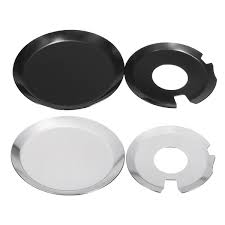
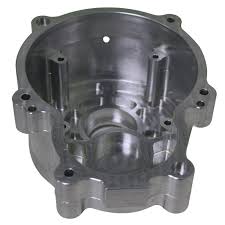
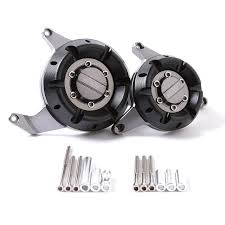
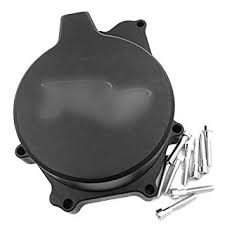
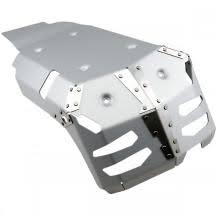
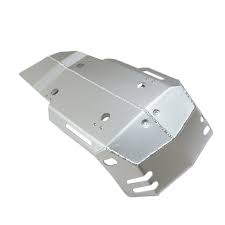
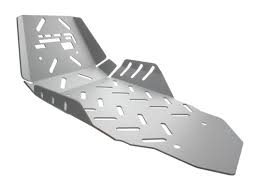

Wind well penetration safety technical measures
According to the engineering requirements, the construction of the return air main road will be connected with the Jindashan wind shaft. During the construction of the return airway, the project department and the construction party have cooperated several times to measure the closure control of the return wind alley and Jindashan wind shaft, and determine the precise position and the height difference and the distance between the two lanes. In order to ensure safety and smoothness, the following safety technical measures are prepared.